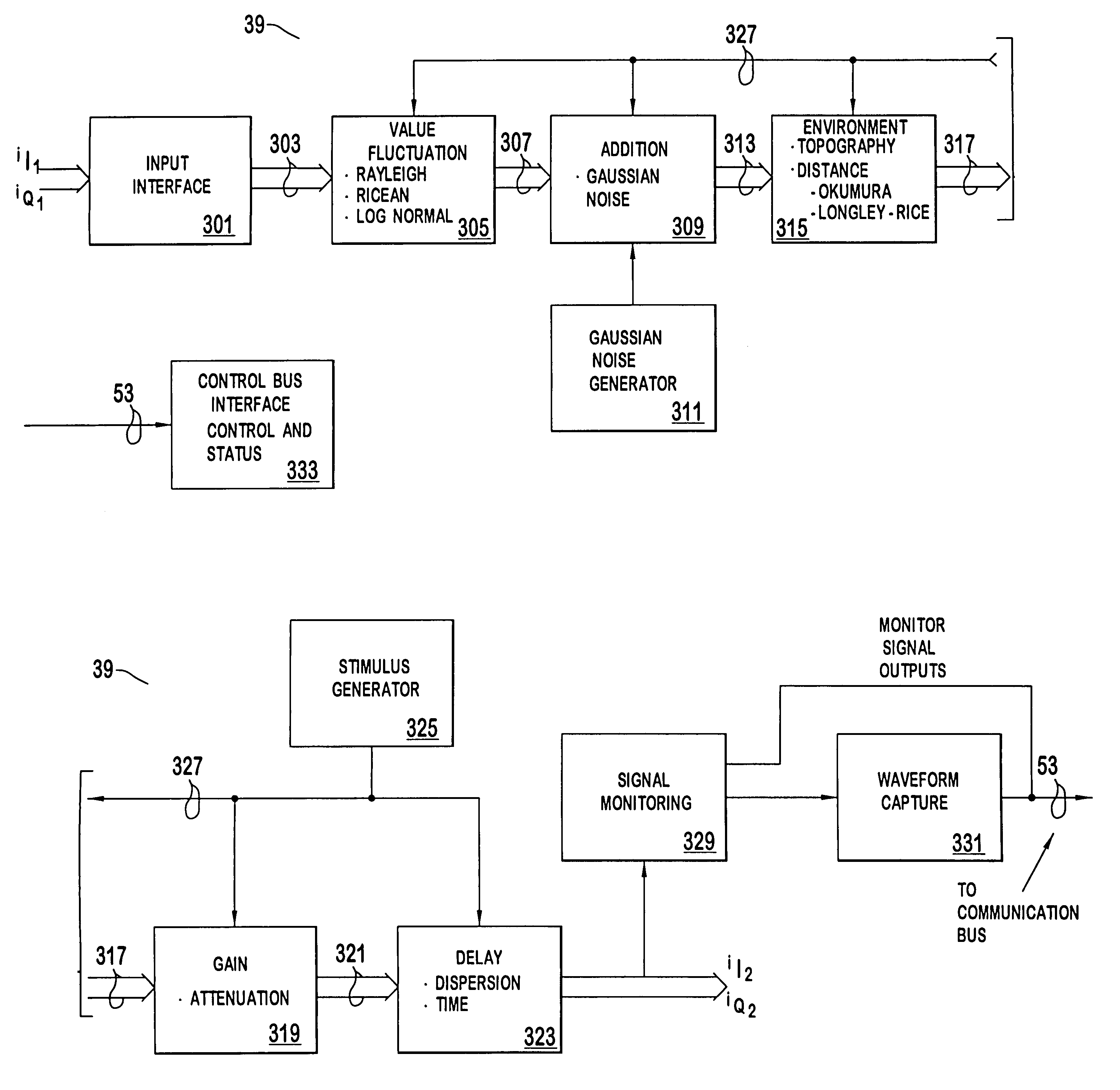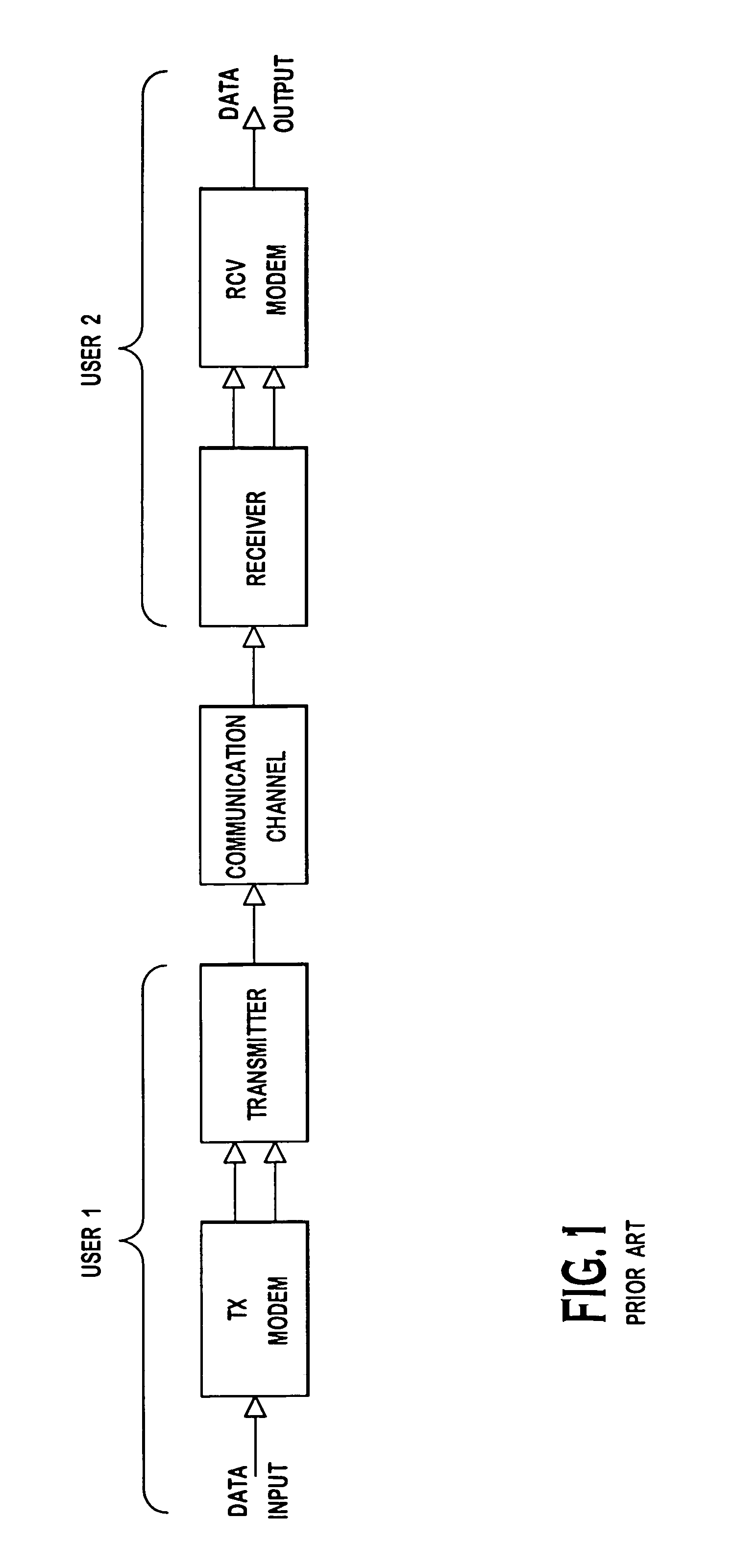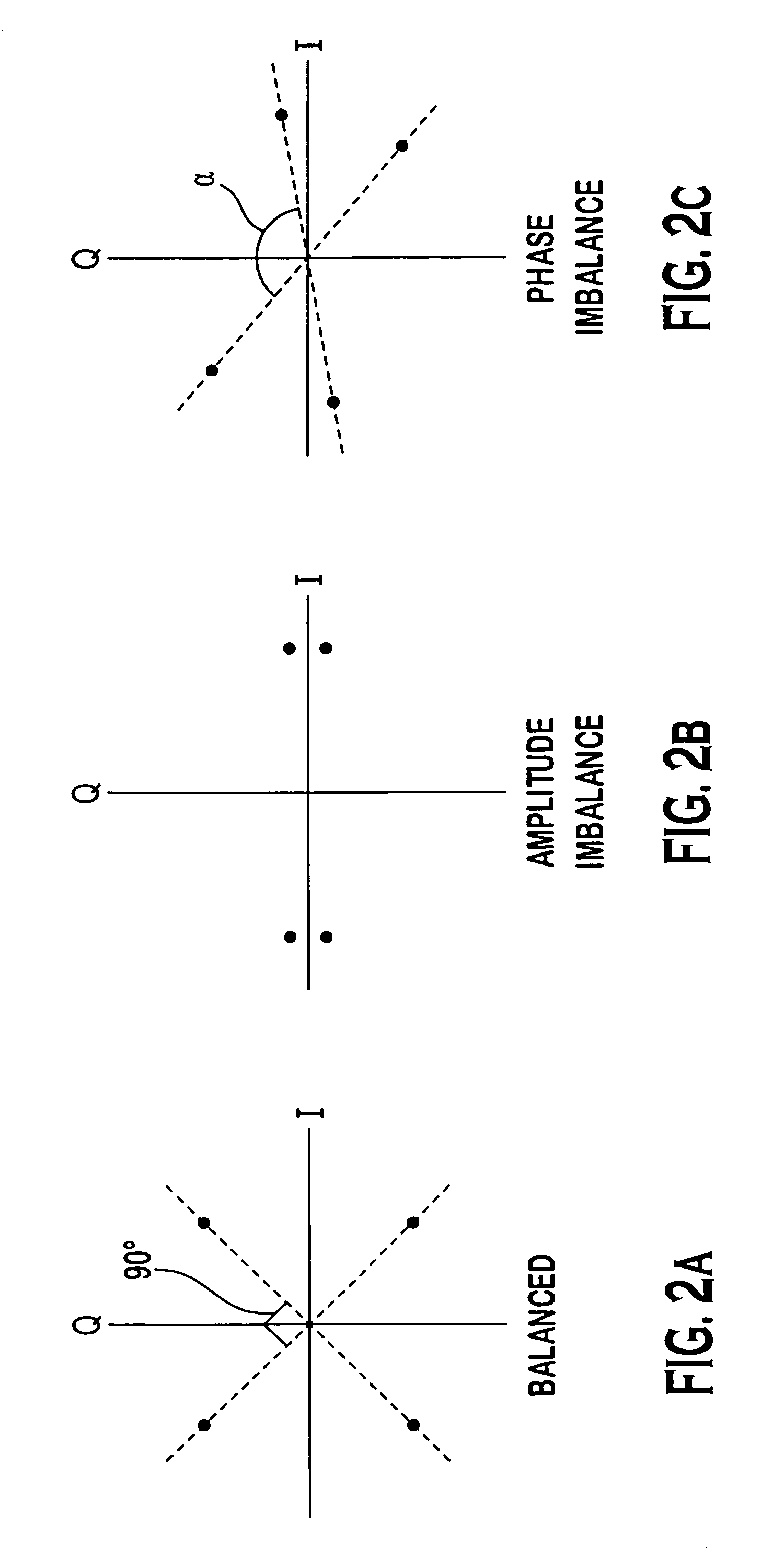Communication transmission impairment emulator
a technology of communication transmission and emulator, applied in the field of analog and digital communication systems, can solve problems such as signal impairment, degraded performance, i and q channels creating errors when processing, etc., and achieve the effect of optimizing modem design and thorough testing and optimization of modem performan
- Summary
- Abstract
- Description
- Claims
- Application Information
AI Technical Summary
Benefits of technology
Problems solved by technology
Method used
Image
Examples
Embodiment Construction
[0060]The embodiments will be described with reference to the drawing figures where like numerals represent like elements throughout.
[0061]Shown in FIG. 3 is the communication transmission emulator of the present invention 31. The emulator 31 comprises a frame 33 and three addressable, configurable module groups: 1) transmit channel modules 351, 352, . . . 35n, 2) receive channel modules 371, 372, . . . 37n, and 3) communication channel media modules 391, 392, 393, . . . 39n. Each transmit 351, 352, . . . 35n and receive 371, 372, . . . 37n channel module has an external input II, IQ and output OI, OQ, respectively, for receiving a signal from or sending to the modulation and demodulation systems of modems under test. Transmit modules 351, 352, . . . 35n have an external input for receiving a transmit power control TPC signal from the modulation portion of a modem and receive modules have an external input for receiving an automatic gain control AGC signal from the demodulation port...
PUM
 Login to View More
Login to View More Abstract
Description
Claims
Application Information
 Login to View More
Login to View More - R&D
- Intellectual Property
- Life Sciences
- Materials
- Tech Scout
- Unparalleled Data Quality
- Higher Quality Content
- 60% Fewer Hallucinations
Browse by: Latest US Patents, China's latest patents, Technical Efficacy Thesaurus, Application Domain, Technology Topic, Popular Technical Reports.
© 2025 PatSnap. All rights reserved.Legal|Privacy policy|Modern Slavery Act Transparency Statement|Sitemap|About US| Contact US: help@patsnap.com



